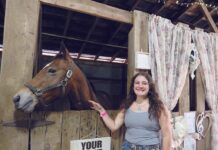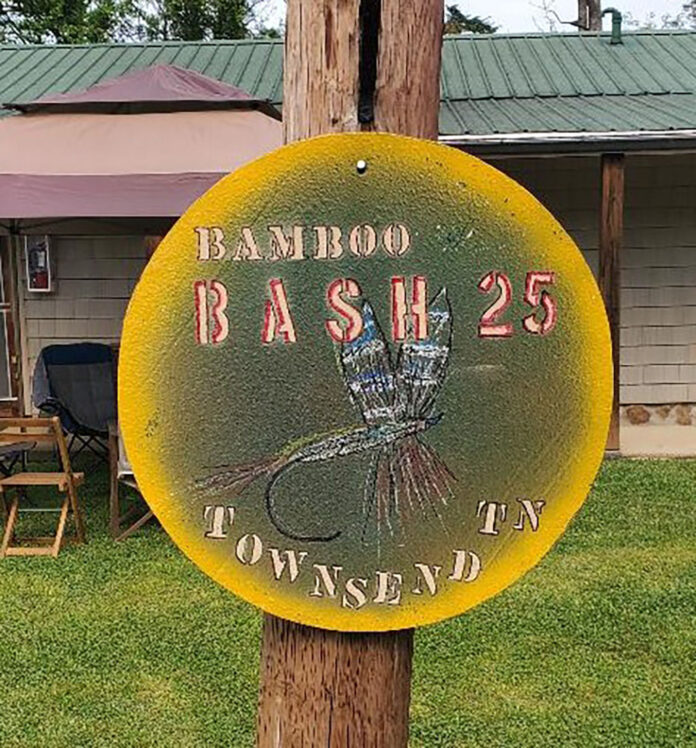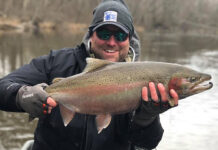When you hear the word “classic,” very different things may come to mind. To the world of academia, ancient Greek and Latin literature would surface. Rembrandt and Monet would come to the mind of an artist. A fashion designer looks for simple, elegant styles unaffected by trends. Novelists could claim anything from “Great Expectations” to “The Great Gatsby.” For gearheads, a ‘68 Mustang Fastback, Porshe 911 or ‘53 Harley Hydra Glide might be the ticket.
I suppose it comes down to our interests and perceptions of how the definition of “classic” fits into our lives. In the end, what we’re describing is something of an almost timeless quality and style that somehow transcends from the monetary to an emotional value. Those interests are spurred by our own experiences, discovered as we move along in life. This is what steered me to the edge of the Great Smoky Mountains in Townsend, Tennessee.
As I arrived, a city park had dozens of cars swarming in. I joined the line and waited my turn. I’d found one of the largest Ford Bronco rallies east of the Mississippi. From 1966’s Jeepish-looking first year to the Bronco II and beyond, they were all there, including thousands of their fans. I was in the wrong place.
Don’t get me wrong, I like the old Broncos and admire those folks keeping that part of American culture running, but I hadn’t come to town to look at four-wheeled classics. I’d driven to Townsend to learn more about an item that was born around 200 A.D., according to the Roman author Aelius in his book “On the Nature of Animals.” In it, he describes how Macedonians had begun tying red wool and feathers to a hook to imitate a local bug. It was attached to a 6-foot-long line and a 6-foot pole, creating the first documented idea of fly fishing. This style is again in vogue, using the “new” Tenkara rods. Actually, there’s little new about Tenkara, which dates back 400 years to Japan.
Fly rods
But I wasn’t in Townsend for anything to do with Tenkara or Roman literature. I was there to attend the “Bamboo Bash.” After a short tour of town, I finally found my destination. It was located at the unassuming Dock’s on the River Motel, a series of small cabins that cater to visitors whose main purpose is to explore the Little River, which flows just behind. I parked and walked up to the 40 or so folks scattered around the area. I was greeted with friendly handshakes and smiles as warmly as if they’d just run into a long-lost friend who owed them money. This was a gathering of bamboo fly rod experts, builders, historians and folks like me — someone who just loves the classic feel of casting a cane.
As we understand fly rods today, that early evolution began somewhere between 1790 and 1845. The majority were built by individuals in small shops and were made of solid ash and lacewood. Most credit American gunsmith Samuel Phillippe for creating the first six-stripped bamboo rod in 1846, with Charles F. Orvis following suit in about 1850. Phillippe’s son, Solon, built the first hexagon version in 1859. Those early American split-cane rods grew to be the purist’s pursuit for traditional fly casters — and a new world standard.
Unfortunately, these weren’t readily available since they relied upon craftsmen working out of small shops to create these angling works of delicacy and art. It wasn’t until Hiram Lewis Leonard started making machinery for precisely splitting and tapering cane that these rods became more commercially available, though hand fitting and finishing was still required. The H.L. Leonard Company made bamboo rods from 1874, until Hiram’s death in 1907. Today, a pristine Leonard of that era is far too valuable to fish, with collectors willing to cast out an embarrassing amount to reel one into their collection.
Other options
That really isn’t what this group was all about, either. Yes, they all have veneration for the originating builders of classic rods, but they’re far from just admirers of history. While some are definitely rod collectors and all were quite knowledgeable, many were also builders of split-cane rods.
Before stepping on anybody’s waders, let me acknowledge that bamboo isn’t for everybody, and it’s probably no longer the best for some types of fly casting. Those tossing saltwater flies to big fish or stalking carp hogging along the bottom of a stream usually reach for rods made from durable synthetic materials like graphite or carbon fiber. They’re light, strong and can muscle the big ones to the net. These slimmer and trimmer synthetics dominate fly fishing of all types, from farm ponds to the world’s finest trout and salmon fisheries. I doubt that most of today’s fly anglers have even cast bamboo.
Of course, that hasn’t always been true. Split-bamboo was the dominant material for all types of fly fishing until after World War II. Then, Shakespeare and Heddon companies introduced fiberglass, a material that was cheaper, lighter, more durable and quicker to manufacture. During the 1970s, fiberglass fell to graphite rods first offered by Fenwick and Hardy. In the very middle of these reinventions, Orvis kept pace while selling people on the latest materials, but Orvis never gave up on bamboo.
Along with Vermont’s Orvis, there remained those who cherished the feel of bamboo. Michigan rod builders Paul H. Young, Lyle Dickerson, New Yorker Everett Garrison and many other small-capacity builders continued turning out cane to the diehards. It’s this mindset that prompted the creation of Facebook’s “Classic Fly Rod Forum,” a site allowing bamboo collectors, builders and aficionados to explore their interests. This led to members Paul Hinchcliff and Ralph Shuey to float an invitation for an annual gathering, and they got plenty of hits. Thus, the Bamboo Bash was born over 20 years ago.
The biggest draw of the event was the casting lawn. People brought bamboo rods and fine reels from their collections, those recently purchased or built or just a few favorites. Lines and leaders were attached, casting targets put out and the fun began. A box of preloaded spools holding many tapers, sizes and manufacturers of lines was ready to be mated to one of the Pflueger Medalist reels (an angling company founded in 1883 in Akron, Ohio). Called “The Line Lab,” anyone could grab a combination to try on their rod, in hopes of finding the “sweet spot.” You didn’t have to ask to try someone’s combination, they were almost forcing a rod into your hands. The entire event was something between “show and tell” and “hold my beer and watch this.”
Marc Bourgeo (www.dickersonrods.com) and Jon Golder (www.phydatabase.com) were on hand to display their fine collections of rare artifacts and rods from two classic Michigan builders. Golder, who spoke on the history of Young rods, apologized for being long-winded. That brought a bit of a laugh. Everyone there understood that when knowledge, respect and love converge, it’s hard not to talk about it.
All about the people. But, my favorite part of the bash were the informal gatherings between casting and perusing the collections and especially at the end of each day. Munsey Wheby, who built an exceptionally fine rod I’d tried, broke out a bottle of decent bourbon to help warm the conversation. I listened as the gathering shared how they began exploring classic bamboo, how they build to duplicate tapers of particular classic rods, trips that they’ve taken or planned and of the history of the rods and of their own families — and what led each of them to this little Tennessee town. I even learned of a nearby trout stream named Abrams’ Creek.
I met Dan DisStefano, a Massachusetts trooper until an unprovoked attack left him medically retired. He fell back on his love for the outdoors and fly fishing as a safe haven, allowing him to forge ahead in life. It led him to become a bamboo builder and into a friendship with Robert Summers, a legendary rod-maker from Traverse City (www.rwsummers.com).
There was Erin Phelan who married Jeffrey, a man of many interests — especially trout season, salmon season, pheasant season, deer season, turkey season and grouse season. Erin explained that “I’d discovered that those were ‘the other woman,’ and I could either join him or watch as he had all the fun.” She discovered that she genuinely enjoyed these activities, especially fly fishing and bamboo rods. That would lead her to become the assistant executive director of the Catskill Fly Fishing Center and Museum in Livingston Manor, New York (www.cffcm.com).
Mike Canonico, a retired cop from Middletown, New York, was on hand for the bash. We talked stories about being a cop, a game warden, fly rods and pizza while taking a few friendly jabs at each other, and I left with his number tucked away along with an invite to fish the Catskills. Who knows?
I now understand the Bamboo Bash. Sure, it’s about a fly fishing classic and their recreation and collecting, but that’s secondary to the individuals. They truly are the keepers of the flame, protectors of history … the guardians of the galaxy. In the end, as usual, it’s about people — their shared values and understanding of the important. After all, isn’t that the definition of history and how classics are born?
“Classics aren’t made; they’re forged through time.”
— Anonymous













